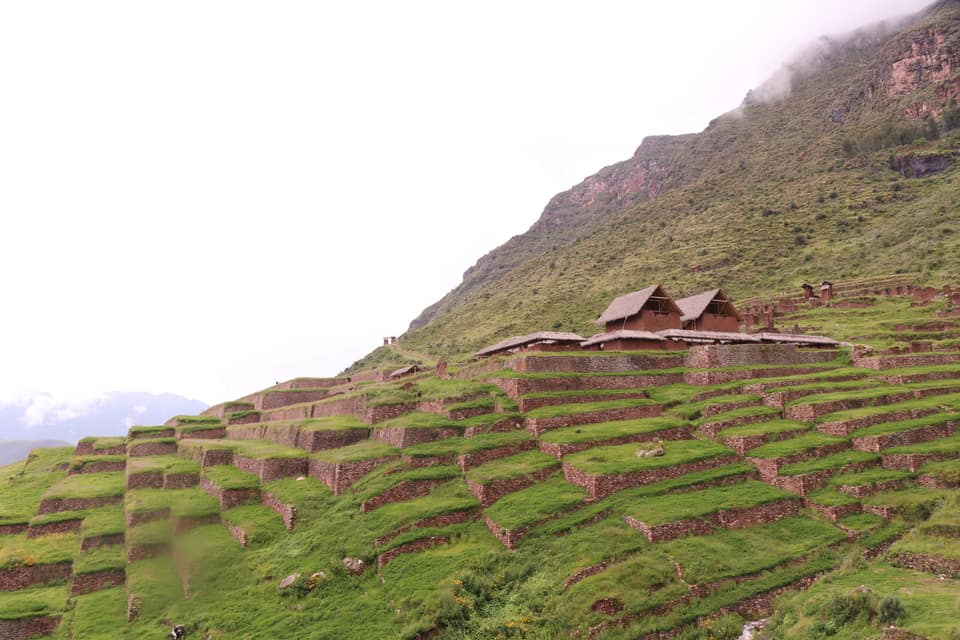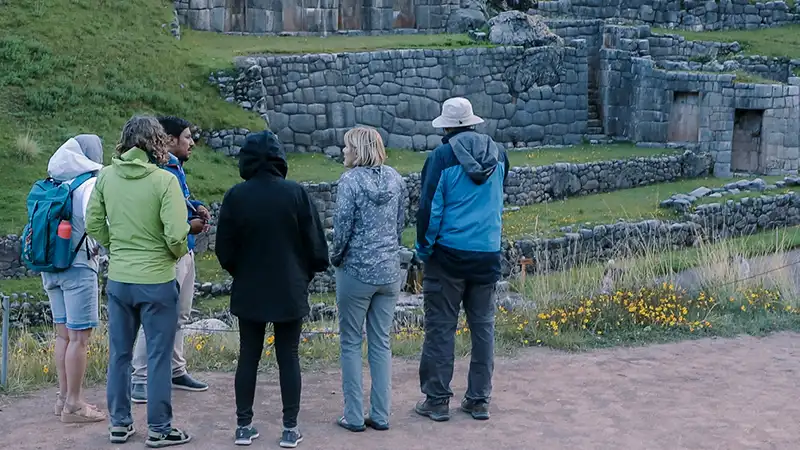Huchuy Qosqo, which translates to "Little Cusco" in the Quechua language, is an archaeological site located in the Sacred Valley of the Incas in Peru. Situated at an altitude of approximately 3,600 meters (11,800 feet) above sea level, it is perched on a plateau overlooking the stunning Lamay Valley and the Urubamba River.

While Huchuy Qosqo is not as well-known or as large as other Inca sites like Machu Picchu or Ollantaytambo, it still offers a fascinating glimpse into the Inca civilization. The site features a combination of Inca and pre-Inca structures, including terraced agricultural fields, storehouses, living quarters, and a central plaza. The buildings are constructed from stone and adobe, with well-preserved plasterwork still visible on some walls.
Huchuy Qosqo is thought to have been a royal estate or a religious and administrative center, possibly built under the rule of the Inca emperor Viracocha in the early 15th century. The site is also believed to have been an important stop along an Inca road system that connected the city of Cusco to the Sacred Valley and beyond.
To visit Huchuy Qosqo, one can take part in the Huchuy Qosqo Trek, a lesser-traveled hiking trail that usually takes around 2-3 days to complete. The trek begins in the village of Tauca (near Chinchero) or Patabamba and passes through beautiful Andean landscapes, small villages, and high-altitude grasslands called Puna. The trek offers stunning views of the snow-capped mountains of the Cordillera Vilcanota and the Sacred Valley.
Upon reaching the Huchuy Qosqo site, visitors can explore the terraced agricultural fields, stone buildings, and the central plaza. It is an excellent opportunity for those who want to experience the Andean highlands' beauty and the Incas' rich cultural heritage without the crowds that typically flock to Machu Picchu.
Being well-prepared for this trek is essential, as the high altitude can pose challenges for some visitors. Make sure to acclimatize in Cusco for a few days before attempting the hike, pack appropriate clothing and gear for changing weather conditions, and carry plenty of water and snacks.


